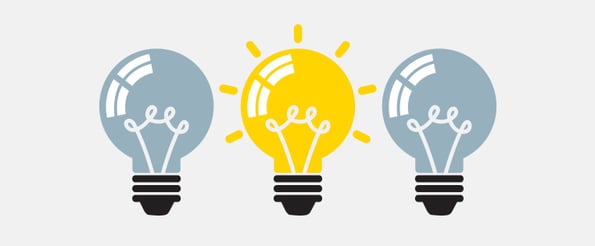

Almost every day for the past 14 years, I’ve made something for a client -- a logo, a website, or a direct mail piece. But seven years ago, my firm decided to shake the standard agency model and do the unthinkable. Rather than charge an hourly rate for designing something, we decided to charge for the value of the ideas we were delivering.
Instead of making low-level marketing executions, we were suddenly solving what a brand stood for and how to deliver its story to an audience. This added tremendous value for our clients. The idea became the foundation, and any design work we executed afterward simply supported it.
The Disposable Nature of Marketing
I don’t mean to discount design. I’m a giant design nerd, and our agency produces beautiful, thoughtful design work. But visual executions of a brand -- email, websites, or direct mail -- are disposable. They are fashion.
For example, look at the state of responsive design on the web today. Almost every brand seems to use the familiar framework of a big photo header and three columns of type with icons above it. Two years ago, that design pattern was not the norm. It’s a trend, and in another two years, something new will replace it.
We learned long ago that no matter how beautiful a design is, or how many awards a project wins, the client will eventually replace it. It’s only a matter of time.
But in a world of stock photos, crowdsourced designs, and WordPress themes, the one thing that can’t be commoditized is your thinking. If agencies position themselves properly, their ideas will be worth a lot more than their executions.
The Shift From Tactic-Driven Marketing to Idea-Driven Marketing
Challenge agency dogma.
Agency owners inherit baggage when it comes to the “right” way to do business. Somewhere along the way, we were told that to successfully run our firms, we should charge by the hour and make profit margins a percentage above our costs -- the more hours, the more profit.
But agencies should strive to be more than a set of production hands. Figure out how you work best, try to codify each step, and sell your process, not just the outcomes.
Uncover brand values.
This sounds so simple, but it can be incredibly challenging to look beyond your clients' mission statements or sales goals to find out what they really believe in. Why does the organization exist? Once you’ve found the answer, it’s much easier to get everyone on the same page -- something that’s fundamental to successful marketing. Every execution and communication from here on out -- internal or external, from sales calls to social graphics -- should be an expression of these values.
Remember: Design is about communication.
When my agency moved to this new framework, we realized that rather than just selling “creativity” or a single designer’s default style, we were using design the way it was intended: to communicate a clear idea.
Don’t just focus on the pretty pictures. You want your design to make people feel something specific. What does it say? A great way to test this is by putting yourself in your audience’s shoes and reading the work you produce. Did you grimace? What would your best friend think? Would he understand it? What would you need to change to show him your brand is different?
Don’t forget the words.
Design trends often put language in the backseat. To some designers, visuals are always going to be more exciting than the copy deck. If the words really are boring, fix that first. Stock photos alone won’t take you very far.
It’s still about design.
When I say “design,” I’m not talking about making a set of artifacts for your client. I’m talking about “design” the way Marty Neumeier defines it: A designer is anyone that can change the current situation into a more favorable one. (I’m paraphrasing.) Your clients should know any design execution your agency produces is informed by invaluable thinking. (And, yes, it should look great, too.)
When your agency’s thinking is the source of a brand’s narrative, its values, and ultimately its position in the market, you become far less disposable. Big ideas aren’t disposable. You don’t have to throw them away with every new email or direct mail piece. You don’t have to redefine the brand each time. Design executions are disposable. The ideas behind them are lasting.










